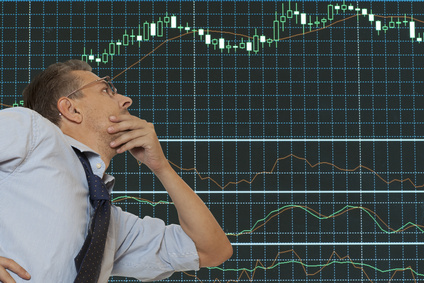Last week I wrote that Eurodollar spreads were indicating only one hike a year, a glacial pace. For example the spread between the September 2016 contract and September 2017 contract had settled on Tuesday June 21, at 23.5. Yesterday, June 28, this spread closed at just 14 bps. The surprise Brexit vote took Fed tightening out of the equation. Where this is most apparent is in the Fed Funds curve. Prior to the Brexit vote, all FF calendar spreads were positive, that is, each successive contract traded at a lower price or higher yield than the one before it. However, after the vote, near calendar spreads inverted. For example, the July 2016 contract settled at 99.625 (or 37.5 bps) and the October 2016 contract settled at 99.660 (or 34 bps). Typically, inverted spreads are indicative of the possibility of EASE rather than tightening. In this case, I would NOT say the market expects an ease, rather, it appears mostly an unwind of hedges related to previous tightening fears.
Having said that, there are clearly trades being entered now that might be called hedges against additional surprises that have the potential to buffet the global economic architecture. For example, there has been steady accumulation of ten year treasury calls, and in Eurodollars there has been substantial buying in the 100 calls. In Eurodollars, the 100 call represents an interest rate of zero. These calls cannot finish in the money unless there are negative interest rates, once unthinkable. However, euribor is currently negative, as is, of course, euroswiss. (3 month interest rates associated with EUR and CHF).
As an example, this week there has been a buyer of EDZ17 100 calls. These calls settled Tuesday at 2.75 bps, and have over 80000 in open interest. They are out of the money by 82 bps, as EDZ17 settled at 99.18. It would seem impossible for the US to move to negative rates, but the sellers of these calls have to wait 538 days to collect the $68.75 that the premium represents on one contract ($25 x 2.75). Over that period they must also post margin. In a way, this little example shows that the Eurodollar option market is truly a wholesale professional market, which trades in large size at relatively low cost. It does though, sometimes give signals about where the market has “fears”. The compression of near Eurodollar calendars, along with the inversion of some FF calendar spreads, along with buying of zero rate calls all point to a market conclusion that Brexit could have far greater ramifications than simply reduced trade flows to the UK. As has been covered by other analysts, it could call into question the very existence of the EU.
Alex Manzara




